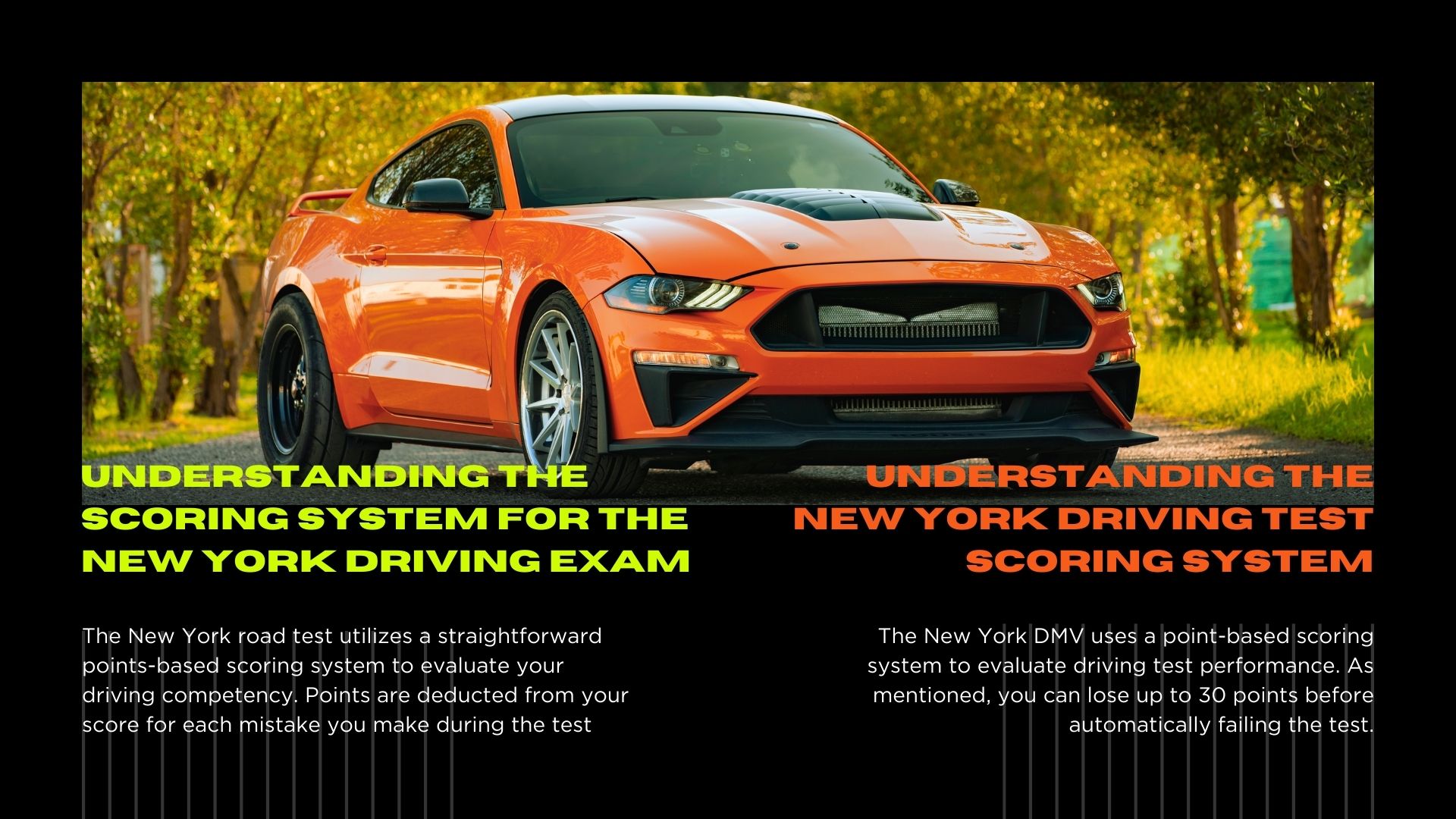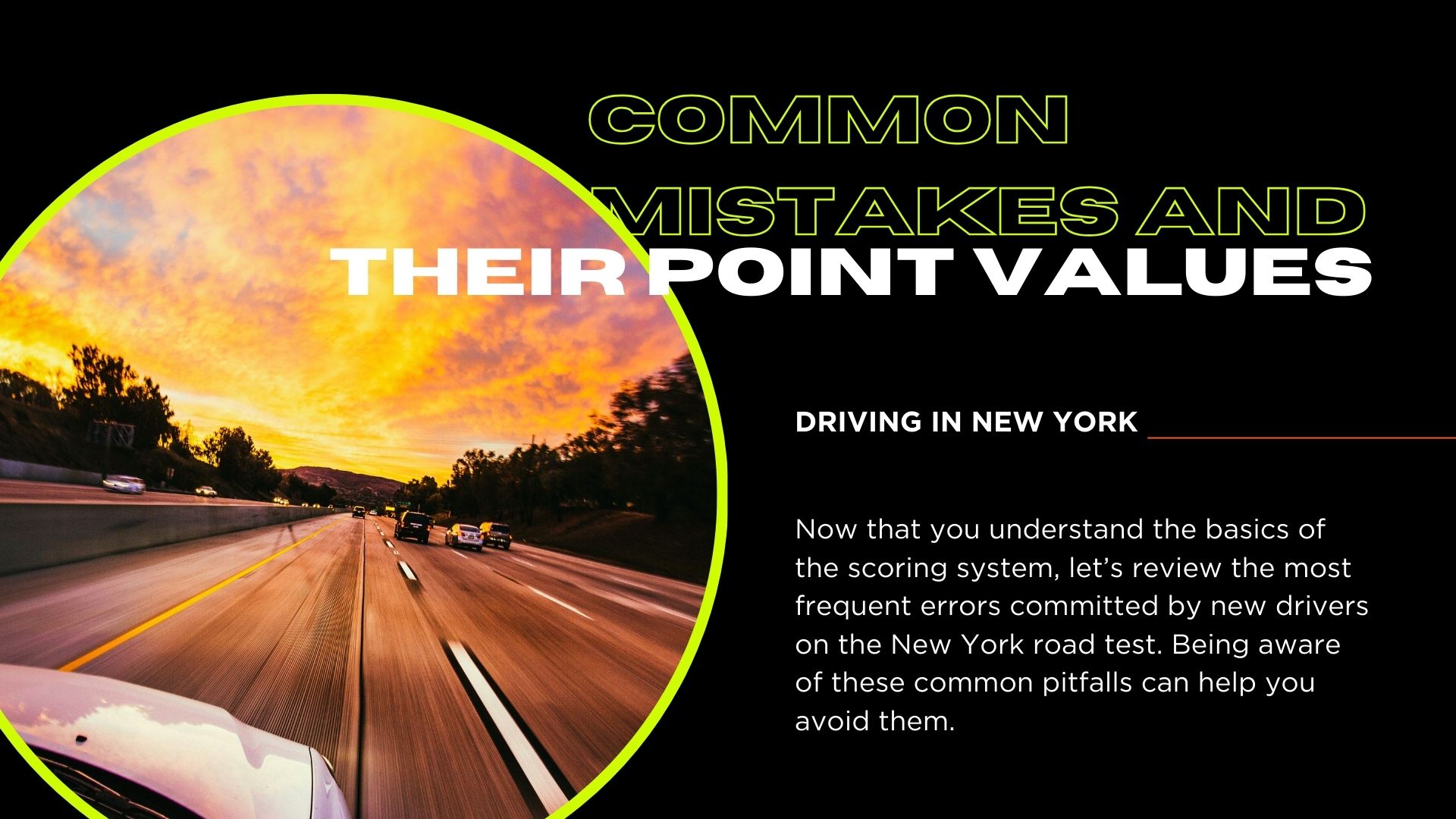How Many Mistakes Can You Make and Still Pass the New York Driving Test?

Table of Contents
Taking the road test for your New York driver's license can be an extremely nerve-wracking experience. Many drivers-in-training find themselves filled with questions and anxieties about the scoring system and acceptable mistake thresholds. Just how many errors are you allowed to make without automatically failing the test?
This blog post will explain the New York DMV road test scoring system in simple terms. You'll learn about the different categories of driving errors and their point values so you can understand your margin for mistakes. We'll also provide useful strategies to help you minimize errors and pass the test on your first try.
Understanding the Scoring System for the New York Driving Exam

The New York road test utilizes a straightforward points-based scoring system to evaluate your driving competency. Points are deducted from your score for each mistake you make during the test:
- Minor mistakes like not checking your blind spot properly deduct fewer points
- More serious errors like running a STOP sign deduct higher points
- Extremely dangerous mistakes result in automatic failure, no matter your current point score
The key scoring threshold to remember is 30 points. Accumulate more than 30 points in deductions, and you will fail the test.
Now let's break down the common mistakes beginners make on the road test and how heavily each one impacts your final score...
Understanding the New York Driving Test Scoring System
The New York DMV uses a point-based scoring system to evaluate driving test performance. As mentioned, you can lose up to 30 points before automatically failing the test.
So how does the scoring actually work?
Your examiner has a score sheet with a list of potential mistakes and their point values. As you drive the test route, points are deducted for any errors you commit based on the severity of the mistake.
There are three major mistake categories:
Minor Mistakes (2-4 Points)
These are small errors that indicate lack of experience rather than dangerous behavior. Examples include:
- Forgetting to signal properly when turning or changing lanes
- Not checking blind spots before maneuvers
- Stalling the engine momentarily
While concerning, most drivers make several minor mistakes early on. These deduct only 2-4 points each to allow room for beginner errors.
Serious Mistakes (5-15 Points)
More significant, risky errors fall into this category. Examples include:
- Excessive speeding
- Rolling through a STOP sign
- Changing lanes unsafely
These mistakes deduct more points because they could result in accidents or injuries when driving independently. They indicate a lack of driving skill mastery expected to pass the test.
Automatic Failure Errors
Extremely dangerous errors result in instant failure, with no tolerance. These include:
- Disobeying traffic signals
- Getting into an accident
- Severely exceeding speed limits
Making even one of these mistakes displays lack of judgment and unwillingness to obey traffic laws necessary to drive safely. Protect yourself and others by avoiding these test-ending errors at all costs.
Now you understand the scoring basics - minor errors just deduct small points, while serious or dangerous mistakes can lead to failure. Next, let's cover the most common mistakes beginners make on the New York road test.
Common Mistakes and Their Point Values

Now that you understand the basics of the scoring system, let’s review the most frequent errors committed by new drivers on the New York road test. Being aware of these common pitfalls can help you avoid them.
Minor Errors (2-4 Points)
Failing to signal properly (3 points)
Forgetting to use your turn signal when changing lanes or turning is extremely common. Use signals every time, even when you don't see other cars around.
Rolling stops at signs or lights (3 points)
Not coming to a complete stop results in an automatic deduction. These are easy points to lose accidentally.
Other minor errors:
- Forgetting to check blind spots
- Allowing excess distance from the curb while parking
- Stalling the engine
Serious Errors (5-15 Points)
Speeding Over the Limit (5+ points)
Your instructor will direct you to go 5-10 mph over briefly to test your acceleration. But sustained speeding can result in failure.
Dangerous Lane Changes (8 points)
Cutting off other drivers when changing lanes makes examiners nervous. Check your surroundings and signal before changing lanes.
Rolling Through STOP Signs (10 points)
Failing to come to a complete stop is treated severely due to the extreme danger it poses.
Automatic Failure Errors
Running Red Lights or Stop Signs
This displays lack of caution for right-of-way rules.
Getting in an Accident
Accidents almost always result in automatic test failure, for safety reasons. Drive defensively.
Driving the Wrong Way
One wrong-way turning mistake demonstrates confusion and may end the test.
As you practice driving, keep these common mistakes and point values in mind. Actively working to avoid these errors will help assure you have the best road test performance possible.
Strategies to Minimize Mistakes and Pass the Test
Now that you know the most common mistakes, let’s discuss some tips to avoid errors during your test:
Study the New York Driver’s Manual
The manual explains every road rule tested on the exam. Read it thoroughly multiple times during your practicing. Test your knowledge with online quizzes.
Practice Extensively Before Attempting the Test
There is no substitute for actual driving experience when preparing for the exam. Practice every maneuver in various traffic conditions until they feel second nature.
Schedule the Road Test at a Familiar DMV Location
Choose a test site close to where you practiced driving to give yourself the advantage of familiarity during the exam.
Bring a Vehicle You Know Inside and Out
Bring the car you trained in to avoid struggling with unfamiliar controls under pressure during the test.
Remain Calm and Focused
Nervousness often provokes mistakes. Get relax beforehand through breathing exercises, positive self-talk or listening to relaxing music. Stay present once driving.
Drive Defensively and Cautiously
Focus less on speed or “performing” certain maneuvers and more on safe operation by being attentive, careful and defensive. This mindset will serve you well beyond just passing the test.
Ask Your Examiner for Clarification if Ever Unsure
It’s better to ask questions during the test if confused rather than guessing and making a major error. Examiners just want to see safe driving.
With practice and these common sense tips, you can feel confident and avoid costly mistakes when showcasing your skills during the New York road driving test.
Understanding Your Margin of Error is the Key to Passing

As you now understand, the New York road test scoring system allows you to make some minor mistakes while evaluating your overall driving competence. Knowing the most common errors and their potential point deductions can reduce anxiety.
The key takeaways are:
- The passing threshold is 30 points - lose less than that during your test through careful driving and you can still pass
- Minor mistakes like forgetting to signal will only deduct you a few points - don't panic!
- More serious errors may deduct higher points. Avoid them through practice.
- Dangerous mistakes usually result in automatic failure. Drive slowly and defensively above all else.
While a test score sounds daunting, just remember that examiners mainly want to see safe, lawful driving. By studying diligently, practicing extensively, driving cautiously and using the tips provided above during your test, you can minimize mistakes. Understanding the scoring system also reduces the fear of the unknown.
You’ve got this! Go into your test confident in your preparation. We wish you the best of skill proving you deserve your New York license. Let us know in the comments once you’ve successfully passed!
Frequently Asked Questions
-
How many points do you need to pass the New York driving test?
To pass, you need to score 70 or higher. This means keeping your mistakes/deductions to under 30 points total.
-
What is the easiest DMV location to pass the driving test in New York?
Typically, less crowded DMV branches in smaller cities and towns have higher pass rates. Sites like Poughkeepsie, Spring Valley, and Glens Falls can be easier than New York City branches.
-
Can you pass the New York driving test with an automatic transmission?
Yes, you can pass by taking the test in an automatic car. There is no requirement in New York to demonstrate manual transmission proficiency like some other states.
-
How many times can you take the driving test in NY?
You can take the New York road test as many times as needed to pass. However, you'll need to pay a retesting fee for each attempt beyond the first two tries covered by your learner's permit fees.
-
What is the most common reason for failure on the NY driving test?
The most frequent reasons for failure are speeding, failing to properly yield right-of-way, disregarding traffic signals or signs, and unsafe turning or passing. Focus on safety above all else.
-
How can I practice for the New York driving exam?
Study the driver’s manual, practice extensively with an experienced driver, take professional driving lessons, use online simulated tests, and drive as much as possible in various conditions to prepare. Familiarity and confidence are key.

 WhatsApp
WhatsApp
